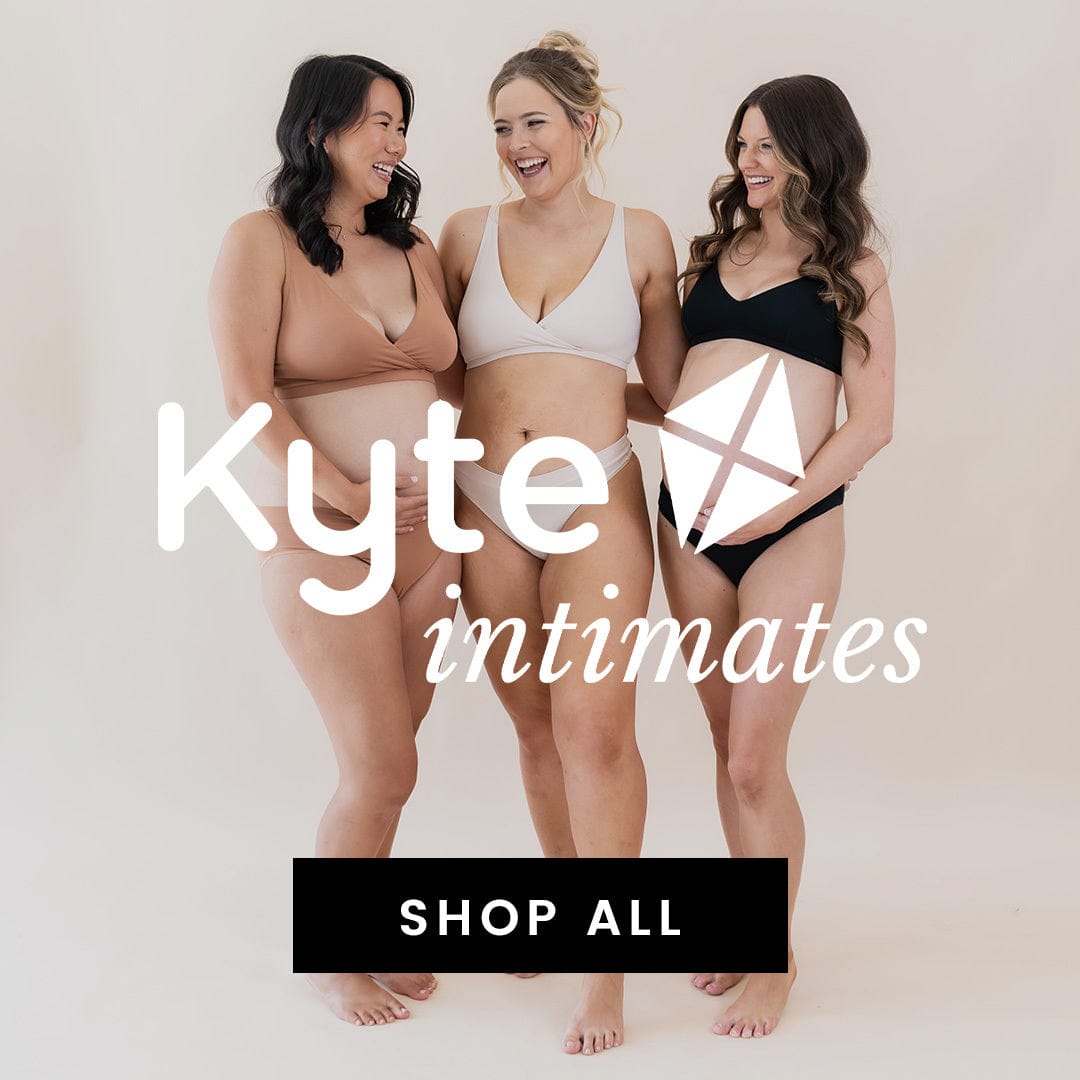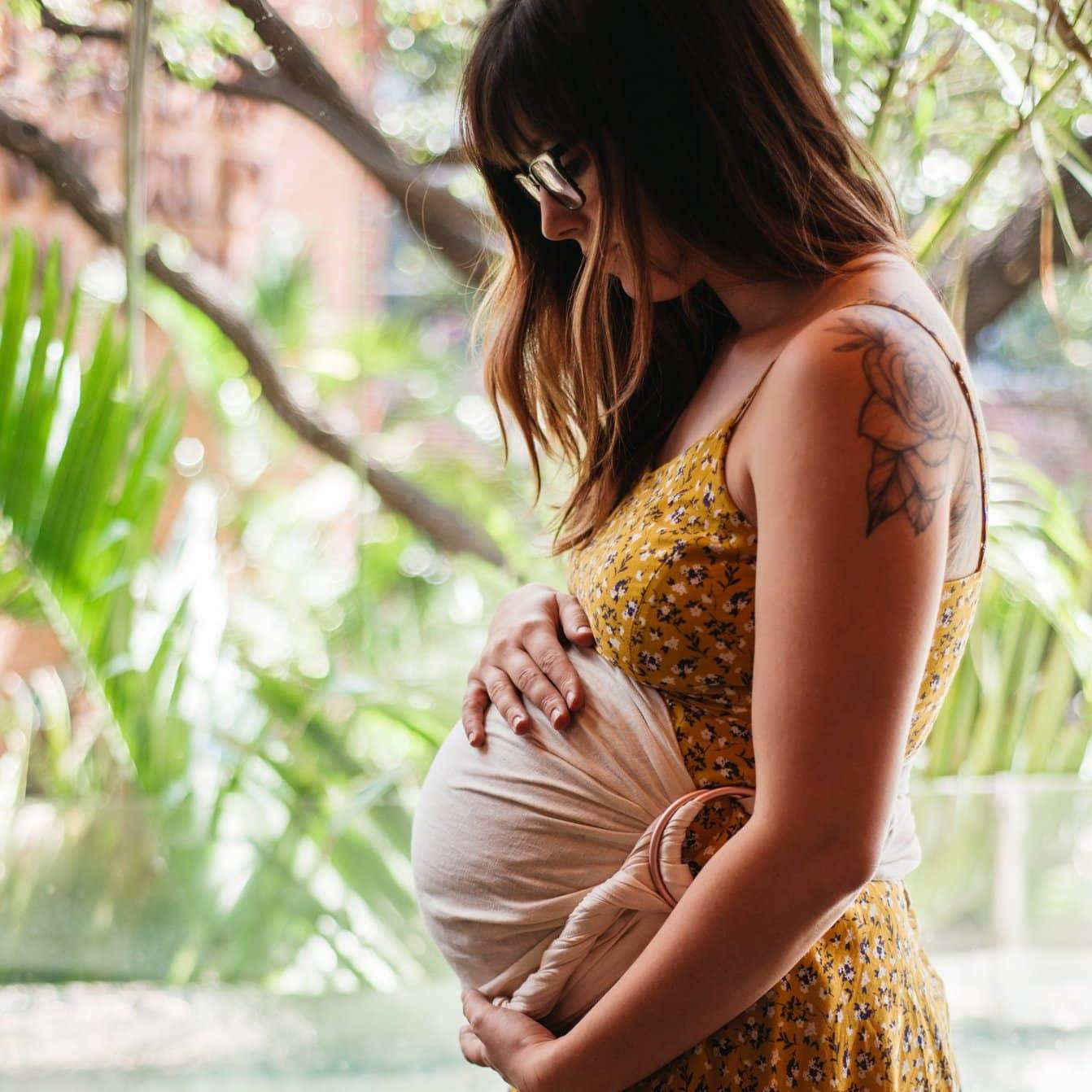All About Infant Sleep Sacks
The newborn phase and infant year can be some of the most magical times of your life as a parent. What’s a little less magical for most parents is getting the hang of a good sleep routine. Here’s the good news: there are tons of sleep products that can help keep baby safe, snuggly, and snoozing all night long.
Keeping your newborn in a sleep sack is your new secret weapon for helping your little one drift off to dreamland. With a myriad of options for chilly winters, warm summers, and any environment in between, Kyte Baby sleep bags will be a true game-changer for your whole family.
A Quick History of Sleep Sacks for Babies
Infant sleep sacks first appeared in the 1930s in Finland’s famous Baby Boxes, which are still distributed today to help give all children an equal start to life. Because of the use of infant sleep sacks and other safe products, Finland has one of the lowest infant mortality rates in the world. With stats like that, it’s no wonder keeping your newborn in a sleep sack is more popular than ever.
What is An Infant Sleep Sack?
An infant sleep sack, also known as a sleep bag or wearable blanket, is a safe alternative to a loose blanket that keeps your little one covered up during the night. Sleep sacks can be safe sleep solutions for little ones of all ages, from newborns to toddlers and beyond (we even offer an adult variety!).

Are Sleep Sacks the Same as Swaddles?
It’s important to note that newborns in sleep sacks are not the same thing as swaddlers. Swaddles, whether in the form of traditional blankets or hybrid sleep bags, are another sleep solution that can be used for the first few months of your infant’s life and can be especially useful during the newborn phase because they keep them feeling extra secure and help prevent that pesky startle response, also called the Moro Reflex.
Note: swaddles should stop being used, and you should switch to having your newborn in a sleep sack once your little one shows signs of rolling or turns 8 weeks old to align with safe sleep rules from the American Academy of Pediatrics (AAP).
What are Hybrid Sleep Bag Swaddlers?
Some swaddles can be converted into infant sleep sacks and can be a great investment for the transition period. For example, sleep bag swaddlers allow you to fully swaddle, leave one arm out, or leave both arms exposed while wrapping the “wings” around their chest.
 Once they’ve outgrown swaddling altogether, the Velcro wrap can be fully removed. This leaves you with a classic sleep bag and an easy transition with minimal disruptions to your bedtime routine.
Once they’ve outgrown swaddling altogether, the Velcro wrap can be fully removed. This leaves you with a classic sleep bag and an easy transition with minimal disruptions to your bedtime routine.
Why Should I Use an Infant Sleep Sack for My Baby?
Not only is keeping your newborn in a sleep sack adorable, cozy, and easy beyond belief, but there are many practical reasons to use them, too. Some of our favorite reasons for having newborns in sleep sacks are that they:
- Promote safe sleep
- Act as a sleep cue
- Regulate body temperature
Sleep Sacks Promote Safe Sleep
Safe sleep is arguably one of the most important things for new parents, and keeping your newborn in a sleep sack helps promote safety. Safe sleep guidelines, as outlined by the AAP, state that cribs should be free of any loose objects, including blankets, pillows, and stuffed animals. Infant sleep sacks are safe alternatives to blankets and help prevent SIDS.
Keeping your newborn in a sleep sack keeps their arms free to support them if they move or roll throughout the night. A fitted crib sheet and an infant sleep sack should be everything you need for a night of safe sleep!
Sleep Bags Help with Healthy Bedtime Routines
A proper nighttime routine helps signal to your little one that it’s time to wind down. Their bodies and minds will get used to a series of events, and they will come to associate their infant sleep sack with getting comfortable and drowsy. Keeping your newborn in a sleep sack from infancy onward helps act as one of these sleep cues.
When Can Babies Start Using Sleep Sacks?
Ultimately, the timeline for putting your newborn in a sleep sack is up to you. If desired, you can put your newborn in a sleep sack as soon as they hit the weight requirement of the specific product. Kyte Baby sleep bags currently come in five sizes, the smallest of which is appropriate for babies seven pounds and larger. Thus, it may not be the perfect fit for extra petite babies or preemies, but they will grow into their infant sleep sack before you know it!
 Another good marker for when to switch from a swaddle to putting your newborn in a sleep sack is when your little one starts rolling or regularly busts out of their swaddle during the night, which happens most often around the two to three-month mark. Once you wake up to a random arm and leg sticking out of the top and bottom of the swaddle, that’s a sure sign to switch to a sleep sack for 3-month-olds. If your little one still prefers having their arms covered, a sleep sack with sleeves is the perfect compromise and is wonderful for those extra chilly winter nights.
Another good marker for when to switch from a swaddle to putting your newborn in a sleep sack is when your little one starts rolling or regularly busts out of their swaddle during the night, which happens most often around the two to three-month mark. Once you wake up to a random arm and leg sticking out of the top and bottom of the swaddle, that’s a sure sign to switch to a sleep sack for 3-month-olds. If your little one still prefers having their arms covered, a sleep sack with sleeves is the perfect compromise and is wonderful for those extra chilly winter nights.
When To Stop Using Infant Sleep Sacks
Sleep can be tricky, and transitional periods can be even harder for both parents and little ones. Fortunately, there’s no hard and fast rule for when to stop using infant sleep sacks. You can keep using an infant sleep sack for as long as you and your little one are comfortable with it.
Once a toddler starts getting out of bed on their own, wearing a sleep sack could pose a risk of slipping or tripping. At that point, it would be beneficial to switch to a sleep bag walker, which can be worn by kids weighing up to fifty pounds, or even just a cozy pair of pajamas at night.
Since it’s recommended to keep the crib bare for as long as possible, regardless of age, infant sleep bags are always a safe choice. You can even still use sleep bags once your little one transitions to a regular bed, if you like! As long as you’re aware of proper fit and body temperature, there’s no reason to rush out of using an infant sleep sack. Having your newborn in a sleep sack and keeping them in it through the toddler years will help keep them safe, secure, and comfortable all night long.
How Should You Dress Baby Under a Newborn in a Sleep Sack?
When dressing your infant for sleep, the general guideline is to keep them in the same number of layers as adults, plus one extra layer. If you’re comfortable lounging around the house in a regular pair of pajamas, your little one should be good to go to sleep with a good pair of pajamas plus their infant sleep sack.
 Of course, it’s also important to use your best judgment and follow your baby’s cues. If you have a particularly hot sleeper, it may be best to have a simple onesie underneath while keeping your newborn in a sleep sack.
Of course, it’s also important to use your best judgment and follow your baby’s cues. If you have a particularly hot sleeper, it may be best to have a simple onesie underneath while keeping your newborn in a sleep sack.
Signs of overheating to watch out for during sleep include:
- Red cheeks
- Heat rash
- Excessive crying
- Heavy breathing
- Damp hair
If you notice any of these signs and your little one seems uncomfortable, try removing a layer of clothing, turning a fan on, lowering the temperature in your home, or switching to a lighter TOG. Overheating during sleep is not only dangerous, but it also prevents your baby (and you!) from getting the valuable sleep needed for everyone’s health and safety.
Understanding TOG Levels for Infant Sleep Sacks
One of the many sleep sack benefits we love is getting to choose from different TOGs to create a personalized sleep environment perfect for your baby’s individual needs. TOG stands for Thermal Overall Grade and refers to the thickness of the fabric.
Different TOGs are designed for different room temperatures and can be utilized if your house is particularly hot or cold. Different TOGs are also beneficial for seasonal switches, ensuring your little one stays cool in the summer and toasty warm in the winter.
How to Choose the Right Sleep Bag TOG Level
To find the proper TOG, you should observe the ambient temperature of your baby’s room, which may be different between nighttime and nap time.
Kyte Baby offers three different TOGS:
- 0.5 TOG for temperatures of 74-78°F (23-26°C)
- 1.0 TOG for temperatures of 69-73°F (21-23°C)
- 2.5 TOG for temperatures of 61-68°F (16-20°C)
The 0.5 TOG is the thinnest and offers the most breathability and airflow, while the 2.5 TOG is the thickest and offers unbeatable warmth and coziness. If you’re unsure, many parents opt for a 1.0 TOG to begin, as it is the most versatile for all environments and can be easily bolstered with different clothing types to create a great temperature for your baby.
 Our Favorite Sleep Sack Benefits and Features
Our Favorite Sleep Sack Benefits and Features
There may be lots of options out there for infant sleep sacks, but none stand up to the quality and care of a Kyte Baby sleep bag. For new parents, simplicity and quality are so important when choosing baby items. Our designers have taken great care to ensure every infant sleep sack is not only functional for your family but also comes in exciting patterns and immaculate colors to match your baby’s impeccable style.
Our sleep sacks are all crafted from buttery soft rayon made from bamboo, which is a well-loved textile for many reasons. Bamboo is hypoallergenic, meaning it is suitable for nearly all skin types and won’t irritate or damage the soft skin of your newborn in a sleep sack. It also provides temperature-regulating properties and is generally cooler than cotton, ensuring your sweet little one stays comfy no matter what.
Another one of our favorite details of a Kyte Baby sleep bag is the expertly designed zipper. Our sleep bags feature a double zipper, meaning they can zip from the bottom or the top. The zipper is also J-shaped for easy diaper changes and features a unique “zipper garage” so there is never any skin irritation from a cold, rough zipper.
Finding the Right Sleep Bag Fit
Babies grow like weeds, and sometimes it’s tough to keep up with those ever-expanding limbs and adorable pudgy rolls, but our sizing system is straightforward and easier than you could ever imagine. Our handy size chart provides the perfect guidelines for finding the right fit, from the newborn stage to toddlerhood.
Though it may be tempting to order a size up so your little one has a little extra space to grow, it’s important to order the size that your baby wears currently. Many baby items can be sized up, but sleep bags are not one of them. Sizing up before your baby is ready could result in excess fabric that can potentially get caught around the face, posing a suffocation risk.
When the sleep bag fits properly, it should be snug, but not too tight, around the neck and arms to prevent baby from slipping out of it. Our infant sleep sacks are designed to have a little wiggle room in the legs, so it’s normal if there’s a bit of extra fabric at the end. If your newborn in a sleep sack is experiencing any irritation or tightness around the neck and arms, that’s a sign it’s time to size up.
The Best Infant Sleep Sack to Improve Your Night
Picture it: rocking your sweet baby to sleep under the gentle glow of a nightlight, softly singing a comforting lullaby, and putting your baby in their crib knowing you’ve found the very best infant sleep sack to meet their needs and keep them snoozing soundly all night long.
 Ultimately, the very best sleep sack is one that is appropriate for room temperature, fits properly, and is comfortable for your little one. Kyte Baby sleep sacks provide the quality and longevity you need for your little ones and can help your whole household achieve better sleep.
Ultimately, the very best sleep sack is one that is appropriate for room temperature, fits properly, and is comfortable for your little one. Kyte Baby sleep sacks provide the quality and longevity you need for your little ones and can help your whole household achieve better sleep.














